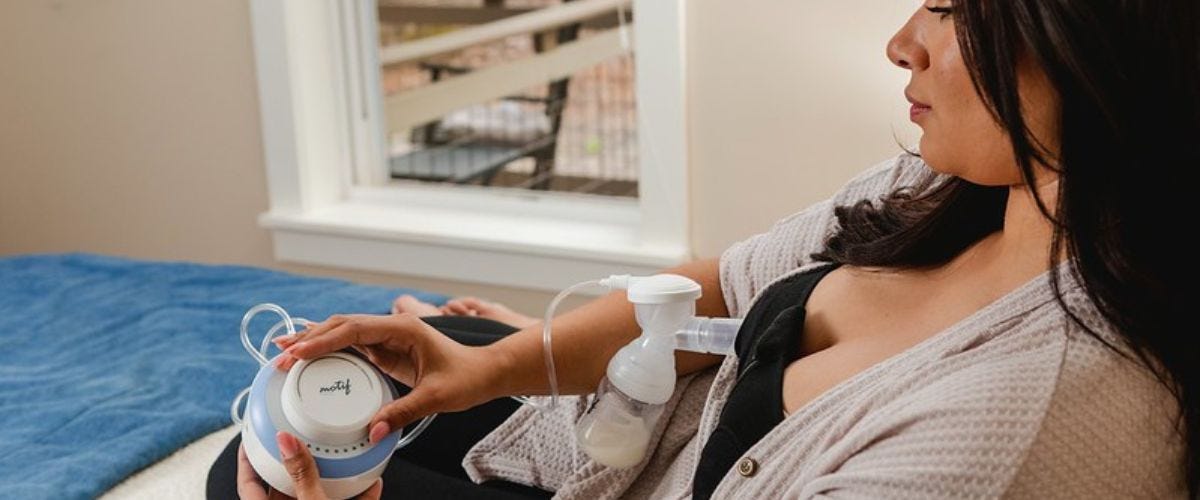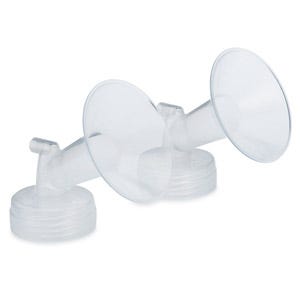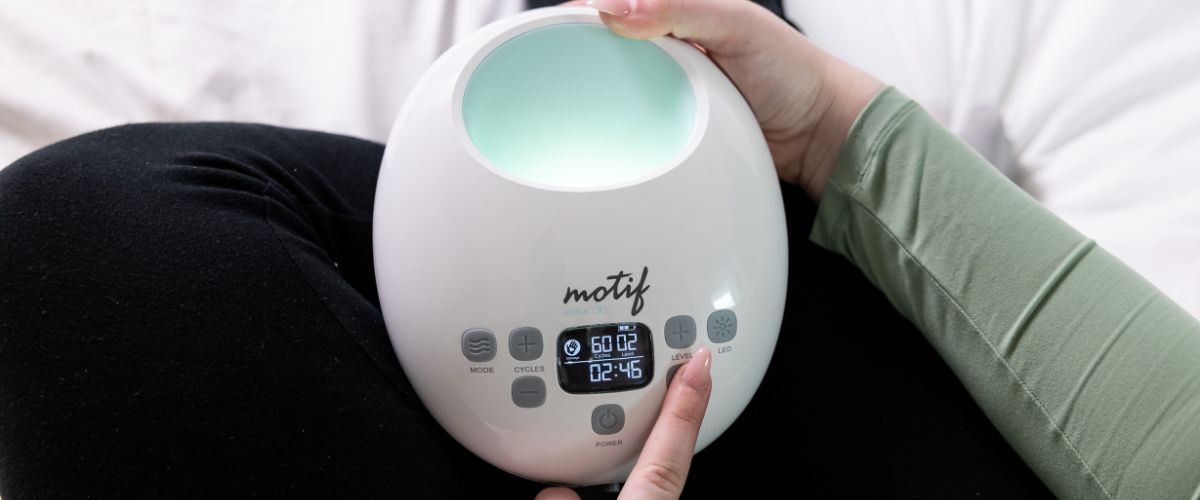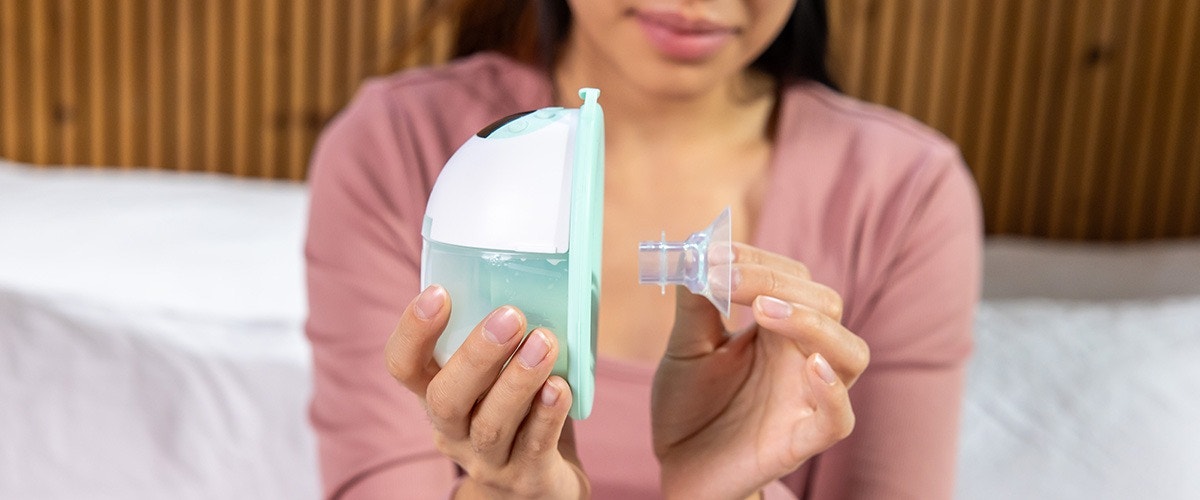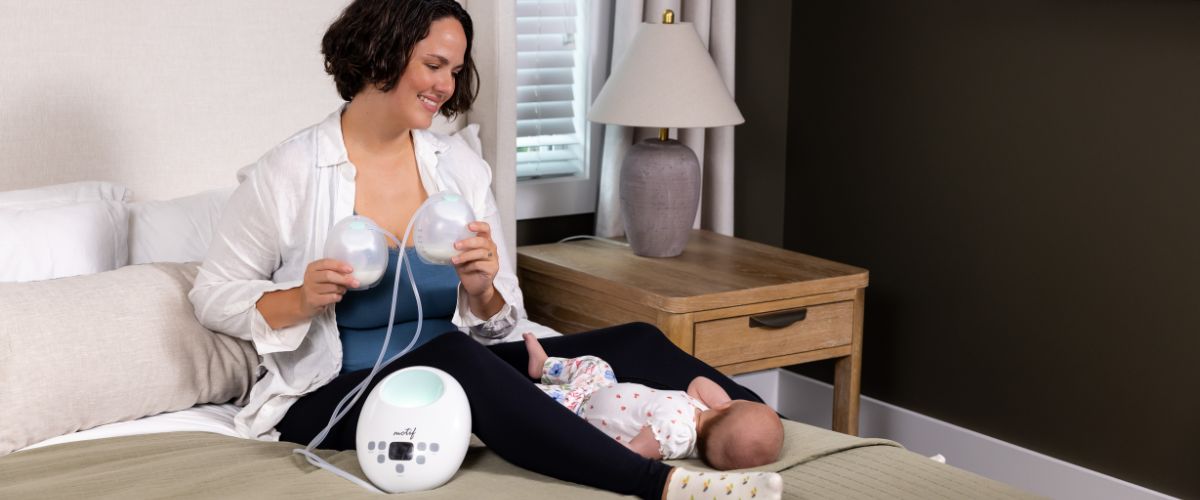What Position Should I Try?
Cradle, Cross-Cradle, Football, Laid Back, Side-Lying, Koala……which one is the best breastfeeding positions? Should you try them all? Are certain positions better in certain situations? What about pumping positions? Do I need to hunch forward the entire time? How can I provide extra support to keep my back, neck, and shoulders from getting sore? Rest easy, mama! There is no need to stress about which breastfeeding position to use. With some simple tips, any breastfeeding position can be effective and comfortable. New moms, your pumping sessions doesn’t have to be a pain in the neck!
Breastfeeding Positions
Tummy to Mummy
No one likes to eat dinner with their head turned over their shoulder and babies are no different. If your baby's tummy is facing any other direction than toward your body, they will be forced to turn their head to get to the breast. This makes it more difficult to open wide for a comfortable good latch and also makes it more difficult for the baby to swallow breast milk.
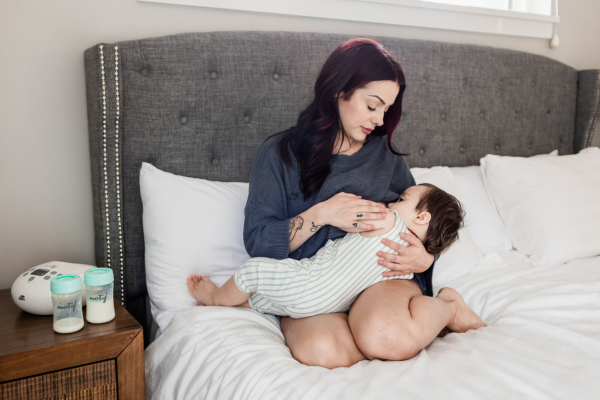

Breast Hug
Babies love to have their hands near their faces, but this can make it difficult to get them into the right position for getting a deep latch. Place the baby’s arms on either side of the breast like they are hugging the breast. This keeps their arms from becoming a barrier to good positioning and alignment.
Nose to Nipple
It might sound counterintuitive to align your nipple with the baby’s nose rather than their mouth, but this is key for encouraging the baby to open wide. Aligning baby nose to nipple causes them to tilt their head back with a wide open mouth for a deep, asymmetrical latch. Your nipple will be slightly angled toward the roof of the baby’s mouth, and the baby’s chin will reach the breast first. This helps the baby feel anchored at the breast and helps them draw the nipple in deep for a more comfortable and effective milk transfer. Aligning the nipple with the mouth rather than the nose can cause a baby to need to tuck their chin down and tilt their head forward rather than back to get to the breast. You can try this technique for yourself too! Tuck your chin down toward your chest and try to open wide. Now, tilt your head back and try. Just like when you tilt your head back to drink from a bottle of water or to get a bite of a big sandwich, a baby needs to tilt their head back to get a big mouthful of breast.
Physical Contact Tips
Stimulation
If you have very heavy breasts or rounder, fuller breasts, you may find that supporting and shaping your breasts makes it easier for your baby to get a deep latch. Make a “C” shape with your hand to gently squish your breast into a burger-like shape (think “C” for cheeseburger”) that matches the direction of your baby's mouth. This will help your baby take more breast tissue into their mouth.
Cradle Baby’s Neck
While the baby’s sweet little head might fit right in the palm of your hand, it’s best to form a gentle cradle at the neck rather than placing your hand over the back of the baby’s head. One of the easiest ways to do this is to place your thumb just behind one ear and your first finger just behind the other. This forms a perfect cradle to support the baby’s head and neck.
Cradling the baby's neck allows space for the baby’s face to tilt their head back for a wide open mouth.
Maximize Contact
Babies thrive on contact with their caregivers. This applies even more while breastfeeding. Pulling babies close and giving them maximum body-to-body contact helps them feel grounded, relaxed, and secure during nursing sessions. Getting a baby’s tummy against you and their arms on your left breast or right breast for a hug are the first steps. But, don’t forget about the baby’s lower half! Snuggle your baby close and allow them to make as much body-to-body connection with you as possible. Babies LOVE to have the insides of their knees and their feet against mom for cozy and secure feeding. The closer you can be to your little smoosh, the better! Wanna take it up a notch….go for maximum skin-to-skin contact during feedings.
No matter which different breastfeeding positions you try, following these steps will help ensure the baby has the best opportunity for a deep, comfortable breastfeeding, and effective latch. If you’re following all of these tips and nursing is still uncomfortable, reach out to a lactation consultant for help determining the underlying cause. Remember, nursing shouldn’t hurt!
Pumping Tips
Don’t Hunch
While it’s important not to lean back and cause milk to run back toward your breasts rather than through the flange and into the collection container, there is no need to hunch forward. Over time, this poor posture can lead to neck, back, and shoulder pain. Instead, sit up straight with shoulders rolled back. If you’re experiencing perineal soreness, talk with your doctor about a donut pillow that can take the pressure off the affected area.
Use Pillows
When possible, use pillows to support your arms and lower back. Consider positioning additional pillows behind your upper back to help you sit up straight and still be comfortable. For those middle-of-the-night pump sessions, a travel neck pillow can allow you to even get some rest while pumping.
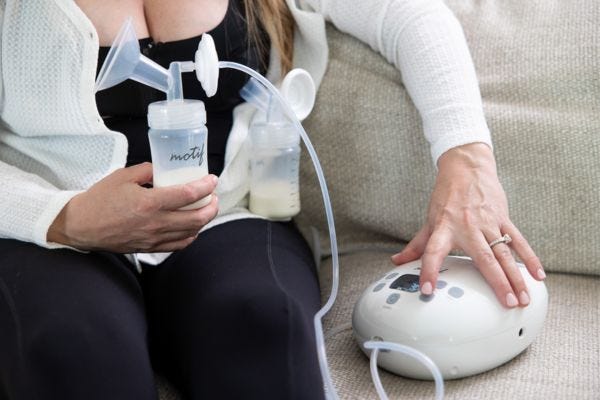

Raise Your Lap
Using a footstool or even an additional pillow on your lap can help create a place for your collection bottles to rest during pumping. This can make holding everything in place just a little bit easier.
Go Hands-Free
A hands-free pumping bra can make the pumping process more convenient by allowing you to multitask. Just take note of how your body responds to focusing on more than pumping. Some moms find that taking their minds off of milk production allows them to relax and let down more easily. Others find that having their mind on emails, phone calls, and social media increases tension and stifles their letdown reflex. Another bonus of using a hands-free bra is that your hands are free for gentle breast massage and compressions while pumping. Using these techniques can optimize pumping output.
Flange Sizing
Don’t assume the flanges that come with your pump are the right size! Be sure to measure your nipples before pumping (both of them) and choose a flange size that doesn’t allow your areola to be sucked into the flange tunnel. Motif Luna offers sizes from 16mm to 32mm, and Motif Duo offers sizes from 19mm up to 32mm. Just like nursing, pumping shouldn’t be painful. If it is, your flange size is the most likely culprit. If you have trouble finding the right fit, connect with an IBCLC (International Board Certified Lactation Consultant) to dial in your flange size. No matter which size you use, make sure your nipple is centered in the flange tunnel.
Pumping With Collection Cups or Wearable Pumps
Collection cups and wearable pumps require a spot-on alignment for not only comfort but also function. Centering your nipple in the flange tunnel is key for optimal pump performance. Be sure your bra or tank provides adequate support and can keep your wearable pumps or collection cups firmly in place. Any shifts of the pumps or cups can cause your nipples to be misaligned, leading to pain as well as poor pump performance. For Motif Aura, make sure the pumps are centered over the nipple and firmly in place before powering on the pump motors.
While the design of wearables and collection cups offers some additional freedom of movement over traditional flanges, bending over could result in spills. If you’re multitasking with your super convenient in-bra milk collection system, just stay aware of how you’re moving your body while pumping.
Just as with traditional breast pumps, flange sizing is key for comfortable and effective pumping with wearable pumps and collection cups. Know your flange size before purchasing a wearable pump as some offer limited sizing options and are not compatible with flange sizing inserts. Motif Aura offers a wide range of sizes from 15mm up to 28mm. Most wearable cups are compatible with silicone flange inserts.
Secondary vs. Primary Pumps
While we’re not talking about a body position here, positioning your wearable pump as a complimentary or secondary pump to your traditional pump is essential for optimizing your pumping output. Wearable pumps work best when used occasionally alongside a traditional pump that is used for most sessions. It’s also best to use a traditional double electric breast pump if you are building supply in the first six weeks postpartum before introducing a wearable.
After your milk supply has been well-established, a wearable can be a nice option for occasional pumping on the go. Motif Luna and Aura make a perfect pumping pair!
As you can see, breastfeeding and pumping positions are rooted in a few simple principles. Once you master those, you’ll be able to make any position work. Whether you’re nursing, pumping, or doing a combo of both, abiding by these tips can make breastfeeding just a little bit easier.
Information provided in blogs should not be used as a substitute for medical care or consultation.


